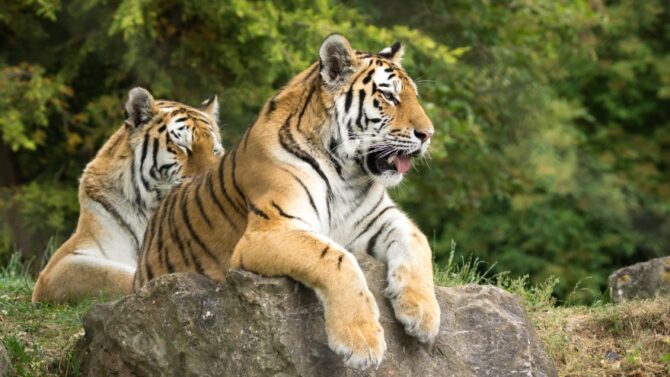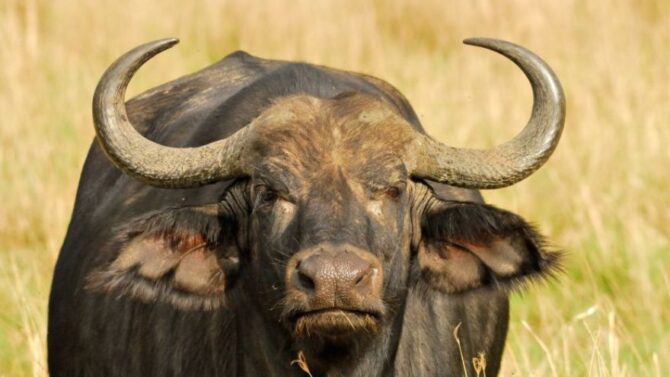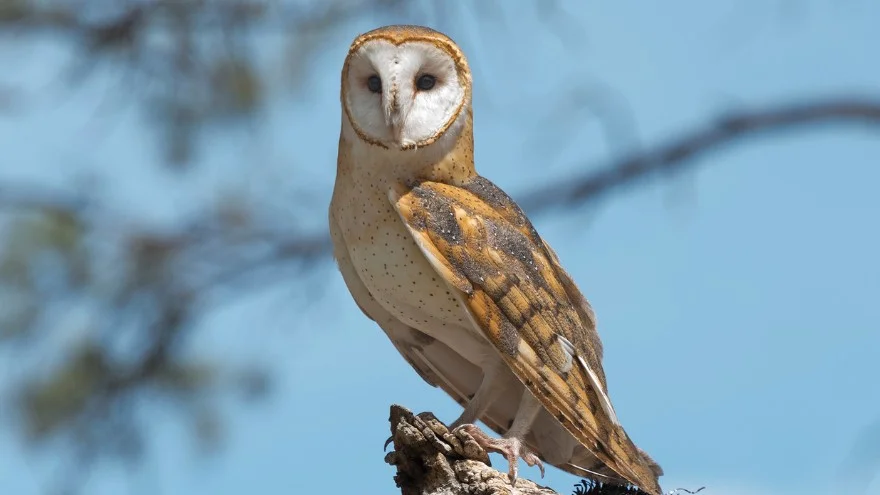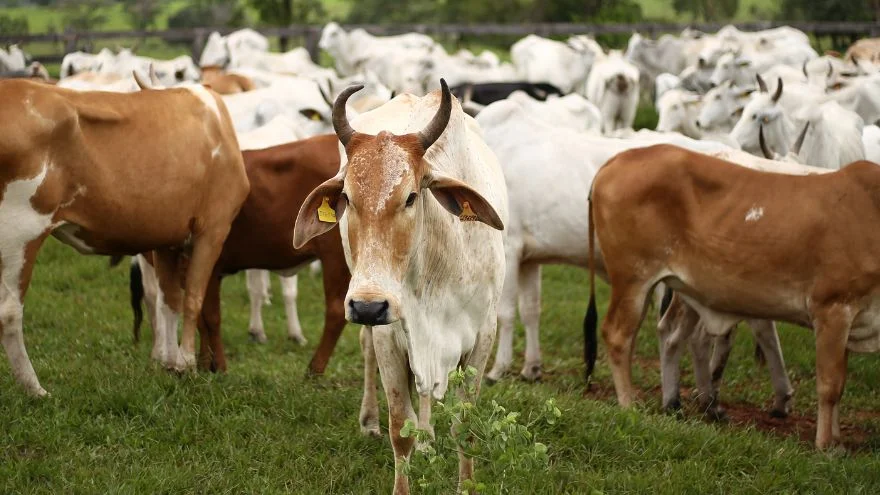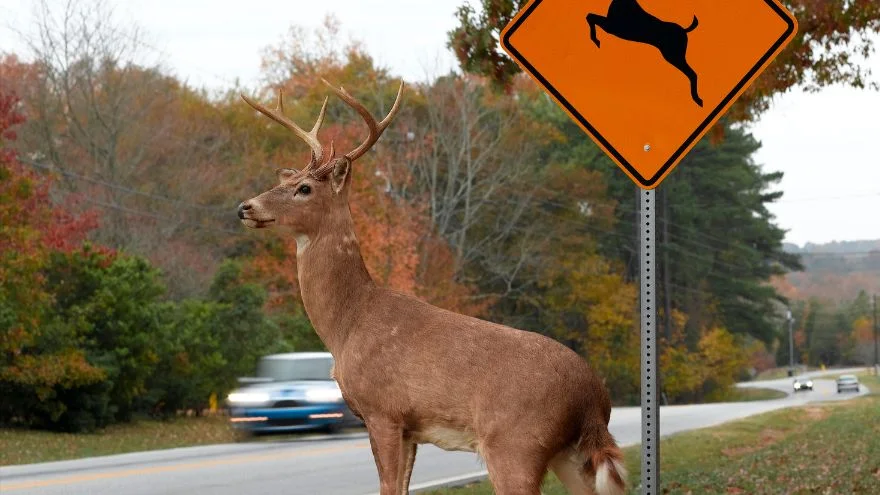England offers a lot of attractions to tourists, more than a view of Buckingham Palace.
There are museums, castles, the Tower of London, Stonehenge…and a lot of well-managed zoos.
For the animal lover in need of good places to view a variety of wildlife, zoos are just as important as castles, arguably more so.
Some of the best zoos in England are the London Zoo, Cheshire Zoo, Bristol Zoo, Whipsnade Zoo, and Marwell Zoo, among others.
Here’s a round-up of the most visited and loved zoo attractions in England, where you can experience amazing wildlife.
The Best Zoos in England to Experience Amazing Wildlife
1. London Zoo
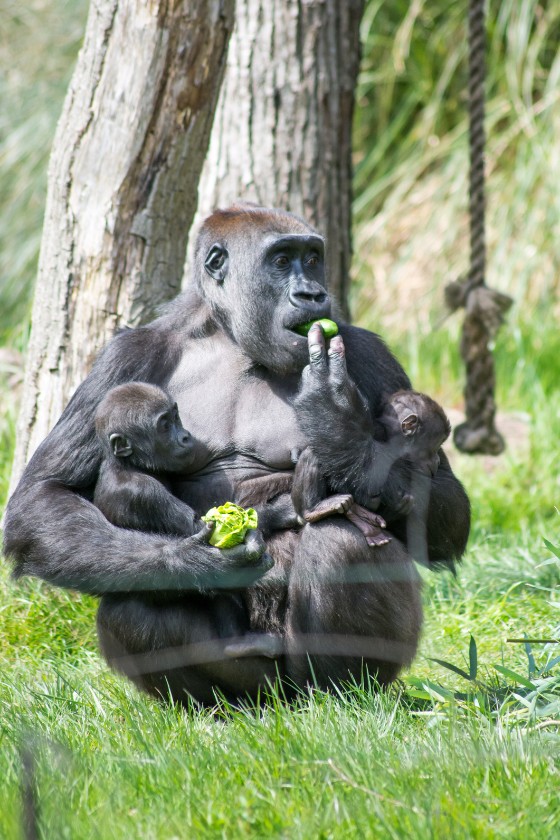
The London zoo is one of the oldest zoos in England, as well as the oldest scientific zoo in the world.1
It is only normal that we kick off with it. It is also known as the ZSL London Zoo, the London Zoological Garden, or the Regent’s Park Zoo.
As all the names show, it is located in Regent’s Park, London. It is managed by the Zoological Society of London.
The London Zoo was established on 27 April 1828. The main aim of starting this zoo was to use it for scientific studies.
The names behind the foundation of this zoo are Sir Stamford Raffles and Sir Humphry Davy, who founded the Zoological Society in 1826.
The London Zoo has had a long history, including going through tough times during the second world war and being a haven for injured soldiers.
The modern-day London Zoo houses over 19,000 animals categorized under 673 species. This is quite large, one of the largest in the country.
This place offers many attractions to visitors, like an insect house, a children’s zoo, the Monkey Valley, and the Land of the Lions.
Visit the London Zoo website here.
2. Chester Zoo, Cheshire
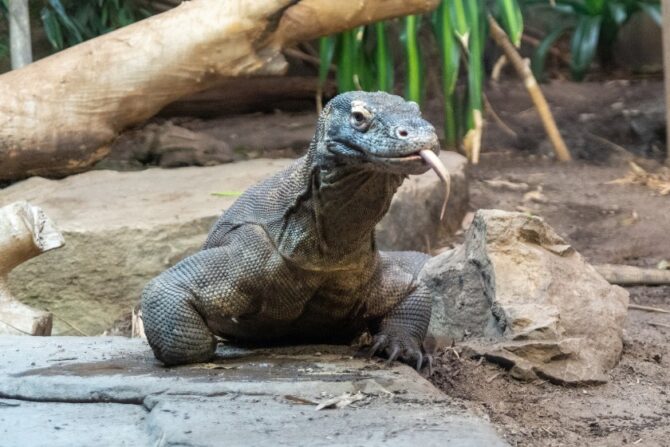
The Chester Zoo is located in Cheshire, and it comes with a lot of titles. It is considered one of the largest zoos in the United Kingdom, measuring around 130 acres.
It is also termed the best zoo in this region, though, of course, that may not be everyone’s experience. In any case, the Chester Zoo is a place you’d love to visit.2
It was founded in 1931 by a man named George Mottershead, together with his family. Mottershead’s main aim was to have a zoo in which the animals weren’t behind cages.
Years later and his dream has lived on, drawing as many as 2 million visitors.
The zoo houses over 35,000 individual animals classed into 500 species. A lot of these species are threatened and are being conserved in the zoo, so you will find a lot of rarities.
Chester doesn’t stop at animals. It also houses plant species, getting up to 265. There are a lot of exhibits than we can mention, but we’ll cite a few, like the Islands at Chester Zoo, the Spirit of Jaguar, the Elephants of the Asian Forest, and Realm of the Red Ape.
Visit the Chester Zoo website here.
3. Marwell Zoo, Hampshire
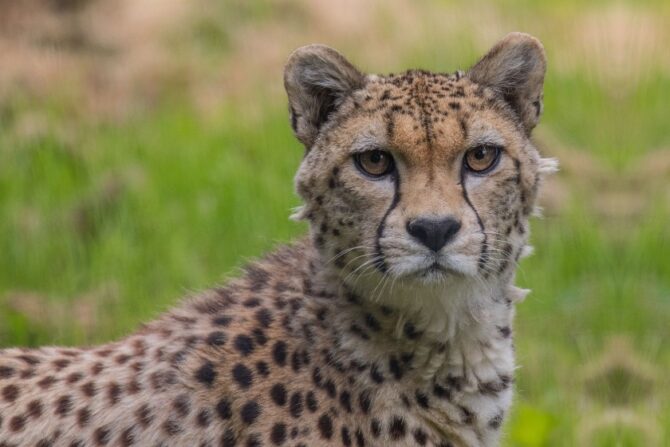
The Marwell Zoo is located in the English County of Hampshire, specifically in the Colden Common parish near Winchester. It is owned by the Marwell wildlife charity that currently runs the place.
The Marwell Zoo is considered the biggest zoo in Hampshire, as it measures around 140 acres.
The Marwell Zoo was established in 1972 by Dr. John Knowles. Something reputable about this zoo is its early emphasis on the conservation of animals.
It is one of the first zoos to have done so in Europe, and it was the home for now-extinct species like the Mongolian wild horse. It also houses endangered animals like the snow leopard and the Siberian tiger.
Overall, the Marwell Zoo is home to over 1200 animals, all classed under 149 species. Exhibits include the Lemur Loop, the Roof of the World, the Penguin Coves, and the Arid lands.
Visit the Marwell Zoo website here.
4. Whipsnade Zoo, Bedfordshire
The Whipsnade Zoo is the second zoo owned by the Zoological Society of London, located in a small village also called Whipsnade, which is in the county of Bedfordshire.
It was once called the Whipsnade Wild Animal Park, but the name changed after some time. It covers 600 acres, making it a very large place. You’d need a bus or train to move around, or you could use your ride.
The Whipsnade Park Zoo was established on 23 May 1931, years after the founding of the Zoological Society.
Something unique about the Whipsnade Park Zoo at its onset is that it was the first open zoo the public could access. It was immediately successful and has since grown after then.
The exhibits in Whipsnade are numerous and quite attractive. There is the Butterfly House, where you’d find different beautiful butterfly species and dwarf crocodiles.
Then there’s the Passage of Asia, Lions of the Serengeti, and an Elephant Herd.
Visit the Whipsnade Zoo website here.
5. Bristol Zoo/Wild Place Project
The Bristol Zoo was located in South West England, but it has been permanently shut down this year.
The announcement was first made on the 27th of November 2020 after over 100 years. The animals were relocated to the Wild Place Project site.
The Bristol Zoo was opened in 1836 under the official name the Bristol Zoological Gardens.
It was known to be in full support of conservation, a good example being the breeding of lemurs. It also participated in education programs worldwide.
Wild Place Project is a brand new replacement, and it has more space to keep larger animals.
It has different areas like the Bear Wood, the Gelada Rocks, the Benoue National Park, and Discover Madagascar. Animals include pythons, lions, dwarf crocodiles, snakes, and squirrel monkeys.
Visit the Wild Place Project website here.
6. Colchester Zoo
The Colchester Zoo is located in Colchester city found, in Essex, the East of England. It is a small zoological garden measuring only 60 acres, but it has its value as it is a haven for many endangered animals.
The Colchester Zoo was established in 1963 and has even celebrated 50 years of existence in 2013. Despite being small, it remains one of the best places to visit around Essex.
It houses around 5,000 individual animals and 270 species. There are different exhibits like the Australian Rainbows, the Butterfly Glade, and even two pools that stay within the Koi Niwa.
Visit the Colchester Zoo website here.
7. Longleat Safari and Adventure Park, Wiltshire
The Longleat Safari and Adventure Park hold the record of being the first drive-thru safari park outside Africa, and it remains the number one today. It is located in Wiltshire, a county in South West England.
This safari came thanks to Jimmy Chipperfield. It was opened to the public in 1949.
The Longleat Safari comes with some tour packages, but you can also explore following your plan if you so wish. There’s a house, garden, and railway.
Some attractive exhibits you’ll find on this safari are the Jungle Cruise, the East African Reserve, the Monkey Temple, and the Animal Adventure.
Visit the Longleat Safari and Adventure Park website here.
Also See: 30 African Safari Animals You Need To See (With Pictures)
8. Port Lympne Reserve
The Port Lympne Reserve is considered more of a Safari than a zoo, and most of the animals housed within are endangered or rare. The reserve covers over 600 acres of land, which is quite wide. You can choose to explore on foot or use a vehicle.
There are an estimated 900 animals in the reserve, all categorized into 75 species.
The reserve offers education on the animals, how they are conserved, and any other fruitful information you may need to know.
Visit the Port Lympne Reserve website here.
9. Twycross Zoo, Leicestershire
The Twycross Zoo is located in Leicestershire, near a village named Norton Juxta Twycross. This zoo is known for having a large collection of monkeys and apes, the largest in the western world.
This is most likely what inspired their fully rebranded name: Twycross Zoo—The World Primate Centre. The zoo gets a lot of visitors, going over 600,000.
The Twycross Zoo was established in 1960 by two folks named Molly Badham and Nathalie Evans.
It took 3 more years to put things in place, and it was by 26 May 1963 that the zoo got officially opened to the public. The zoo has since gotten a reputation for breeding primates.
The zoo counts up to 500 animals spread over 150 species. Many of the latter are endangered.
Being a good breeding ground for primates, Twycross has all four types of great apes: The gorilla, orangutan, chimpanzee, and bonobo.
The zoo doesn’t exhibit only primates, though. It has other animals like snow leopards, meerkats, and flamingos.
Visit the Twycross Zoo website here.
10. Cotswold Wildlife Park, Burford
The Cotswold Wildlife Park is located south of Burford, England. It gets a decent number of visitors, around 350,000 in number as of the 2012 count.
It was officially established in 1970, but the foundations for it were being laid as far back as the 1800s.
There are numerous attractions in this park, including a railway run and a garden filled with a lot of exotic animals.
You also get the chance to see some bats and giraffes. Overall, there are over 260 species in the place.
Visit their website here.
11. Flamingo Land, Kirby Misperton
The Flamingo Land is located in Kirby Misperton village in North Yorkshire. It was once linked to another park named Pleasure Island Family Theme Park until 2010, when both became separate parks.
Flamingo Land was established in 1959 through the actions of the founder Edwin Pentland Hick. The first animal in the park was a colony of flamingos.
From there, it expanded to include attractions like amusement rides and bottlenosed dolphins.
The modern Flamingo Land still has a lot of attractions like the Sik and Hero coaster, the Pterodactyl swing, and the flip-flop ship suspended over artificial lakes.
Visit the Flamingo Land website here.
12. Howletts Wildlife Park, Kent
The Howletts Wildlife Park is located in the parish of Bekesbourne and was once known as the Howletts Zoo. It was established in 1957 as a private zoo by John Aspinall.
It has ties with the Port Lympne Zoo, which was opened to the public and had more space than the Howletts Zoo.
One special attribute of the Howletts Wildlife Park is the close relationship between the staff and animals, which you may not expect in many zoos.
Both the Howletts Wildlife Park and the Port Lympne Zoo are owned by the John Aspinall Foundation.
This foundation runs a lot of conservation programs, and if you’re interested in knowing how endangered animals are being protected, this is a good spot.
Visit the Howletts Wildlife Park website here.
13. Shaldon Wildlife Trust, Devon
The Shaldon Wildlife Trust is quite small but popular in all regards. It is often called the “small zoo making a big difference.”
This Trust is unique in its collection of endangered animals, and you may not find those anywhere. It is set in a wildlife garden.
Here, you get to see creatures like the marmoset, lemurs, and tamarin. There’s also a space reserved for endangered frog species, which you most likely won’t find in other places.
Additional animals are squirrel monkeys and yellow-breasted capuchins.
Visit the Shaldon Wildlife Trust website here.
14. Peak Wildlife Trust, Central England
The Peak Wildlife Trust is located in Central England, very close to towns like Leek, Ashbourne, and Stoke-on-Trent.
It was first known as the Blackbrook zoological park but changed names in 2015 after it reopened following closure the year before.
This zoo was established in 1991 under the name Blackbrook zoological park by Diana Holloway and Mark Rubery.
From then till now, the zoo has always held a lot of animals. This stretches from birds to mammals.
Visit the Peak Wildlife Trust website here.
15. Knowsley Safari Park, Prescot
The Knowsley Safari Park can be found close to Prescot and is quite known for its work in conserving animals.
It was established in 1971 by a group of people, including Edward Stanley, the 18th Earl of Derby.
Just as the name implies, the Knowsley Safari Park’s main attraction is the drive, where you get the chance to see more than 29 animal species.
Other forms of attraction include railways, a baboon house, and an outdoor pool. Additionally, the animals you’ll find are Baboons, African Elephants, and Rhinoceros.
Visit the Knowsley Safari Park website here.
Conclusion
There’s a lot to see in England, including zoos and parks of different sizes.
Ensure to add some of these best zoos in England to your list as you go visiting, and you can visit their websites on the links offered to get more information.
Do have a fun time!
Next up…
References & Notes
Facts Sources:
- Sheridan W. 2022. World’s oldest scientific zoo celebrates 194th anniversary. UPI.
- McLoughlin J. 2017. Chester Zoo named third best in WORLD by TripAdvisor users. Liverpool Echo
